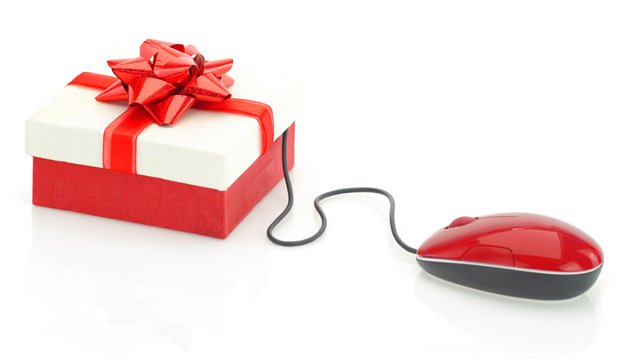
You may still be coming to terms with the end of the summer, but, believe it or not, the holiday season is just around the corner. This may stir up different feelings for everyone, but marketers share in at least one thought: it’s time to prepare a content marketing strategy for one of the most pivotal times of the year.
To help you get on the right track, we dug into our data from the 2012 holiday season* and uncovered some key insights that can be put into action in 2013.
Consistent with the extended shopping hours, frantic crowds, and often full-blown chaos of the holiday season in the U.S., our data shows that Americans consume content twice as much late at night and three times as much on their mobile devices when it’s related to holiday shopping.
1. SMARTPHONES – 251% More Consumption!

During the 2012 holiday season (Nov.1st – Dec.31st) in the United States, a large proportion of all holiday content was consumed on smartphones (relative to desktops and tablets). Smartphones’ share of total holiday content consumption was actually 251% larger than it typically is for all other content!
This should not come as a surprise since holiday shoppers are often on the go and are likely to research products while shopping for them in stores. According to a survey by PewResearch Center, “28% of cell owners used their phone while inside a store to look up reviews of a product to help decide if they should purchase it or not” during the 2012 holiday season. Further, a rapidly growing number of consumers are actually making holiday purchases on their mobile devices (smartphones accounted for 4.4% of U.S. retail e-commerce sales in 2012, according to a study by eMarketer).
Smartphones accounted for 7.1% of all eCommerce sales on Black Friday and 6.8% of all eCommerce sales on Cyber Monday. The proportion of total content consumption on Black Friday and Cyber Monday that came from smartphones was much larger for holiday content than for all other content on average (79% and 200% larger, respectively).
Key Takeaways:
- 72% of consumers say mobile optimized sites are important to them (Google study), but only 27% of brands have mobile optimized sites (Adobe study).
- Be sure to have high quality mobile-optimized content prepared for this holiday season.
- Whichever amplification channel(s) you’re using, remember to take advantage of mobile-targeting options.
2. LATE NIGHT – 136% More Consumption!

Our study also found that late night hours (12AM to 4AM) account for more than twice the amount of daily holiday content consumption compared to daily consumption of the rest of the paid content in the network. This could be related to the extended shopping hours of the holiday season, both in-store and online (e.g., online coupons and deals launching at midnight).
This finding is consistent with comScore’s analysis of spending by time of day on Cyber Monday in 2010 and 2011. According to this study, the percentage of total US Cyber Monday spending that took place between 9pm and 9am grew from 3% in 2010 to 12% in 2011. When we looked at the percentage of total holiday content consumption that fell within this time interval on Cyber Monday 2012, we saw that it had grown to be even larger.
Key Takeaways:
- Let data inform your decisions as to when to push out your holiday content. Consumption patterns for content related to holiday shopping differ from the typical patterns seen for other content. Rather than waiting until morning, consider publishing your content that night. There is a much larger proportion of consumers than usual that you could potentially miss out on by prolonging the content push until the morning.
3. WEEKENDS – 16% More Consumption!

Holiday content showed a stronger tendency to be consumed over the weekends than all other paid content, with weekends accounting for 16% more of total holiday content consumption than of total non-holiday content consumption during the 2012 holiday season.
Key Takeaways:
- While weekends typically fall victim to content consumption drop-off, our data suggests that this is much less of an issue when it comes to holiday shopping-related content. Instead, the weekends offer an opportunity that should not be overlooked when mapping out this year’s holiday content strategy.
- The weekends of the holiday season precede some of its most crucial shopping (Mon)days: Cyber Monday, Green Monday, and Free Shipping Day. In the U.S., the Sunday before Cyber Monday (11/25/12) was the 6th highest day of the month in terms of the number of clicks on holiday content in our network, despite the fact that it was not a weekday. Take advantage of the fact that holiday shoppers are consuming more content on these weekends than you might have expected by getting your content in front of them before Monday’s purchase decisions.
We hope that sharing these insights with you has been helpful as you plan for the holidays. Remember: As researching online prior to making purchase decisions becomes the norm (76% of consumers researched online prior to making holiday purchases according to a 2012 study by Google & Ipsos), investing time in a holiday content strategy will be well worth your while. On that note, happy holiday content planning!
Got great holiday content ready to be discovered? Amplify it now with Outbrain. Outbrain recommends your content on premium publisher sites around the web reaching 87% of the US population with more than 193 million uniques each month. Get started here.
*This study looked at how Americans consumed holiday-related content from consumer product, retail, and electronics brands during the 2012 holiday season, relative to all other paid content running in our network during that time.








